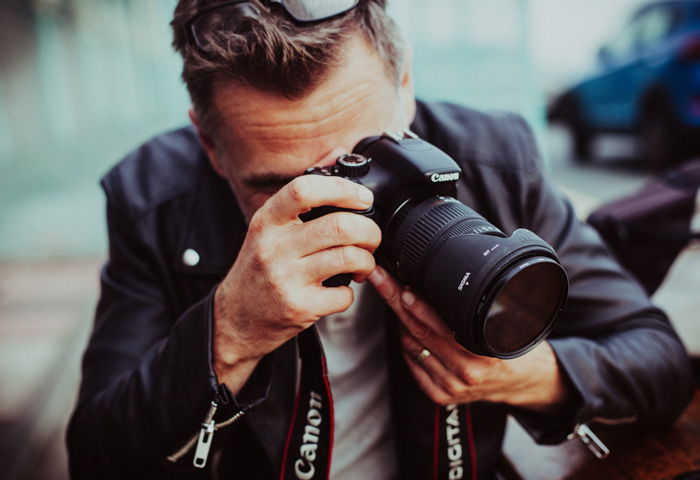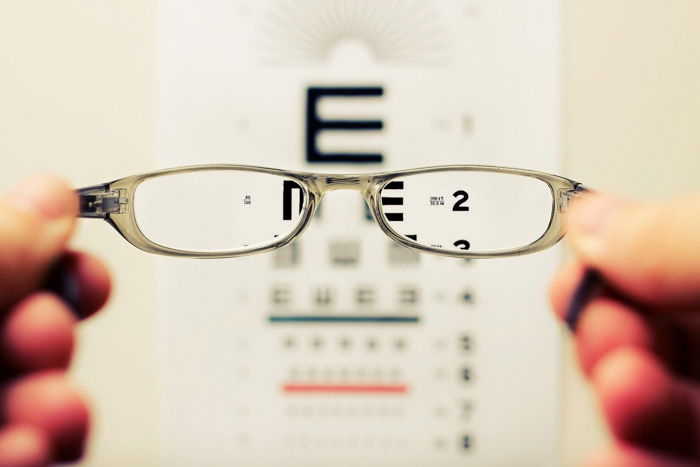Did you know that one of your eyes is more dominant than the other? In photography, understanding which eye is dominant can make a big difference in the quality of your photo.
Knowing your dominant eye helps you with framing and composition. And it lets you create more balanced and visually pleasing photos.
So in this article, we’ll show how to determine your dominant eye. And we’ll show you how it can help you create better compositions and improve your photos!

Humans are blessed with a trait called ocular dominance. It means one of our eyes is stronger than the other. And that stronger eye gives a slightly greater degree of input to the visual part of your brain.
It’s the same way that we’re right-hand dominant or left-hand dominant. We’re either right-eye dominant or left-eye dominant.
That said, it is possible to have a mixed (alternating) ocular dominance. In that case, your eyes take turns being dominant.
The part of our brain that processes visual information is the “visual cortex.” And it has strips of neurons (nerve cells). They’re called dominant eye columns.
These bands of neurons respond preferentially to input from one eye or the other. It depends on the information. This is important for our binocular vision.
But “plasticity” in these dominant eye columns suggests this dominance can be variable. Some people find that their eye dominance alternates or is challenging to determine.

When looking at an object, you use both eyes. You use both your dominant eye and your non-dominant eye.
But your eyes don’t create an image by mixing two views of the same object. You see an object with your dominant eye. And then the other eye acts as support.
There are simple ways to figure out your dominant eye. And you can follow this simple eye test to determine which one of your eyes is dominant.
Remember, eye dominance and handedness (your dominant hand) are not directly related. But they are greatly associated.
Follow these steps to determine your dominant eye:
You may have mixed eye dominance if the triangle moves an equal distance with both eyes.
Knowing and using your dominant eye is beneficial for many activities. It is especially helpful when determining the precise positions of things. This is something like accurately shooting targets in archery.
And, of course, this translates into taking photos. Using your dominant eye to look through your camera’s viewfinder lets you compose better images. Your dominant eye gives you a more precise preview of the shot you are taking.
And using your non-dominant eye can cause certain details to be slightly displaced. Or they’re not exactly where you want them in the frame. Imagine framing a scene or placing essential elements in the center without accuracy.
If you’re not doing it already, use your dominant eye the next time you take pictures. It’s vital if you’re using leading lines, the golden ratio, or the rule of thirds to place points of interest.
You want the subject placement to be accurate in photos. But there is a benefit to taking photos with your non-dominant eye.
I tried shooting first with my dominant eye (right) and then with my non-dominant eye (left). At first, I found no difference. I shoot with my dominant eye automatically because I’m right-handed.
But then, I wanted to use my peripheral vision. I wanted to “keep an eye” out while looking through the viewfinder with my dominant eye. But I found it impossible to do this with my non-dominant eye.
You can try it yourself. Keep both eyes open and alternate between both eyes. You might find that your dominant eye repeats the exact image you see. And this makes it very difficult to see peripherally.
I can still photograph a scene using my non-dominant eye in the viewfinder. But I can also see the world outside my camera’s frame with my dominant eye.
Yes, this perhaps isn’t necessary for some, like landscape photographers. But shooting and watching your surroundings simultaneously can be helpful if you shoot street photography. It all depends on your style of taking photos.

Knowing which eye is dominant ensures you take the most accurate compositions. This is important from technical and creative aspects to capture the photo you envision.
But there are instances when using your non-dominant eye to take photos is helpful. It lets you see the changing scene in the world around you. And using your dominant eye for peripheral vision can help you anticipate shots.
It’s best to determine when to focus on composition or the anticipation of a shot. But don’t be afraid to experiment using both your dominant eye and non-dominant eye when taking photos! And if you need some help, try out our Intuitive Composition e-book and cheatsheets to capture stunning everyday images!